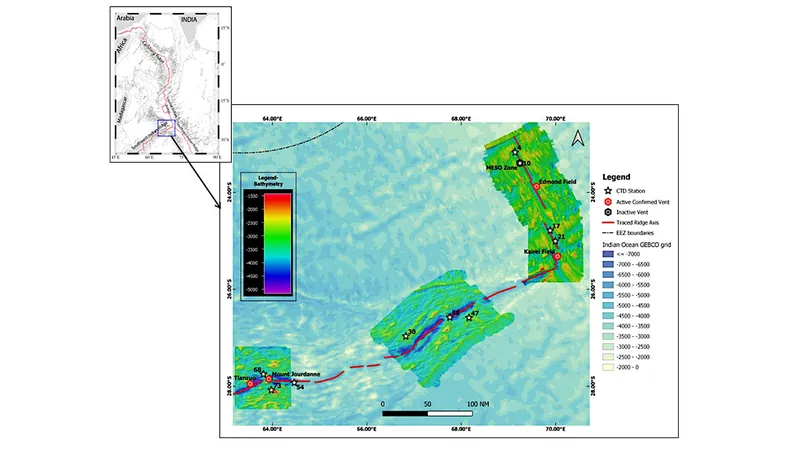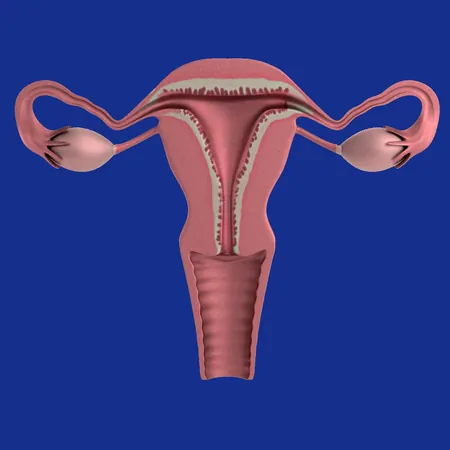
Unveiling the Secrets of the Deep: How Upper Circumpolar Deep Water is Shaping Microbial Communities!
2025-01-13
Author: Yu
Introduction
Deep-sea ecosystems are teeming with life, but it's the hidden microbial communities that truly drive global biogeochemical processes. Recent research focusing on the hydrothermally influenced areas of the Central Indian Ridge (CIR) and Southwest Indian Ridge (SWIR) unveils essential insights into the metabolic potential and diversity of these microorganisms.
Research Methodology
Utilizing a cutting-edge functional microarray-based approach, scientists embarked on an extensive study to dissect the factors that influence microbial metabolism and the variations in functional gene composition at different depths in these oceanic regions. By meticulously stratifying water column samples from the surface down to the near-bottom environments, researchers measured key environmental variables that shape microbial life.
Key Findings
Surprisingly, the findings revealed that a significant portion—about 38% to 41%—of the genes present across both regions were linked to carbon cycling processes, particularly starch degradation, highlighting a dominant reliance on heterotrophy. However, the plot thickened in certain areas where genes related to nitrate reduction and resistance to arsenic and mercury were more pronounced, indicating a localized impact of hydrothermally derived substrates on microbial niches.
Diversity of Microbial Communities
Incredibly, the study found that microbial functional gene diversity reached its peak in the turbid waters of the Southwest Indian Ridge, as evidenced by an impressive diversity index (H = 9.18) and an evenness measurement (J = 0.90). Insights into temperature and salinity profiles revealed the presence of nutrient-rich upper circumpolar deep water (UCDW) at depths greater than 2,000 meters, emphasizing its crucial role in sustaining these unique microbial populations.
Influence of Nutrients on Microbial Dynamics
Principal component analysis results indicated that the availability of inorganic nutrients predominantly determines functional gene diversity in the deeper waters. This suggests a transformative role of the nutrient influx from UCDW rather than solely relying on hydrothermal sources to fuel the metabolic activities of these microbial communities.
Conclusion
This research not only illuminates the microbial dynamics at play along the southern Central Indian Ridge and eastern Southwest Indian Ridge but also underscores the wider implications for understanding deep-sea productivity. As we continue to unravel the complexities of ocean ecosystems, it becomes clear that the interplay between various water masses, such as UCDW, is fundamental to shaping life’s intricate web in the abyss.
Looking Ahead
Stay tuned for more groundbreaking revelations about the ocean's depths, and the unexpected ways in which these microscopic organisms influence our planet's climate and health!



 Brasil (PT)
Brasil (PT)
 Canada (EN)
Canada (EN)
 Chile (ES)
Chile (ES)
 Česko (CS)
Česko (CS)
 대한민국 (KO)
대한민국 (KO)
 España (ES)
España (ES)
 France (FR)
France (FR)
 Hong Kong (EN)
Hong Kong (EN)
 Italia (IT)
Italia (IT)
 日本 (JA)
日本 (JA)
 Magyarország (HU)
Magyarország (HU)
 Norge (NO)
Norge (NO)
 Polska (PL)
Polska (PL)
 Schweiz (DE)
Schweiz (DE)
 Singapore (EN)
Singapore (EN)
 Sverige (SV)
Sverige (SV)
 Suomi (FI)
Suomi (FI)
 Türkiye (TR)
Türkiye (TR)
 الإمارات العربية المتحدة (AR)
الإمارات العربية المتحدة (AR)